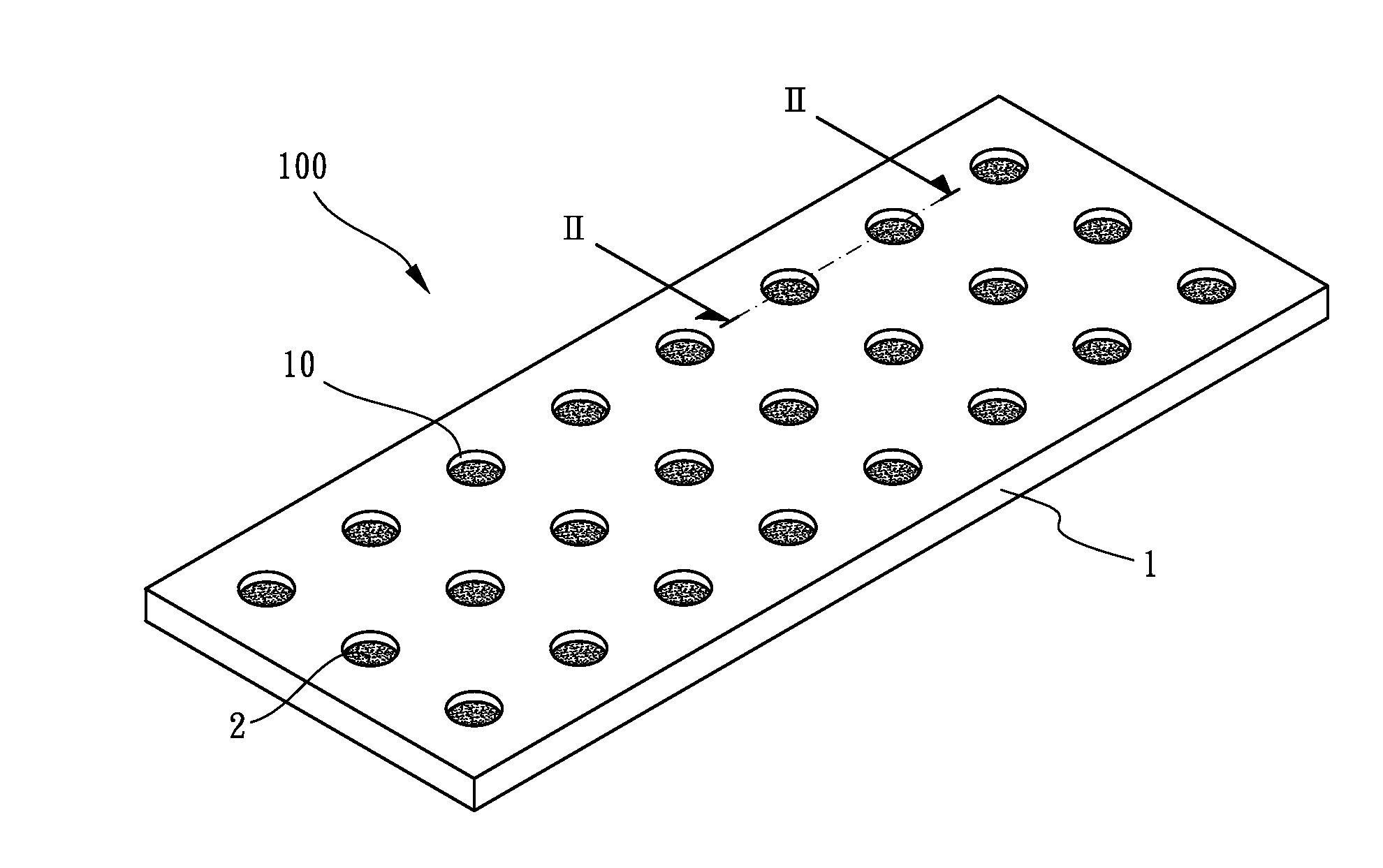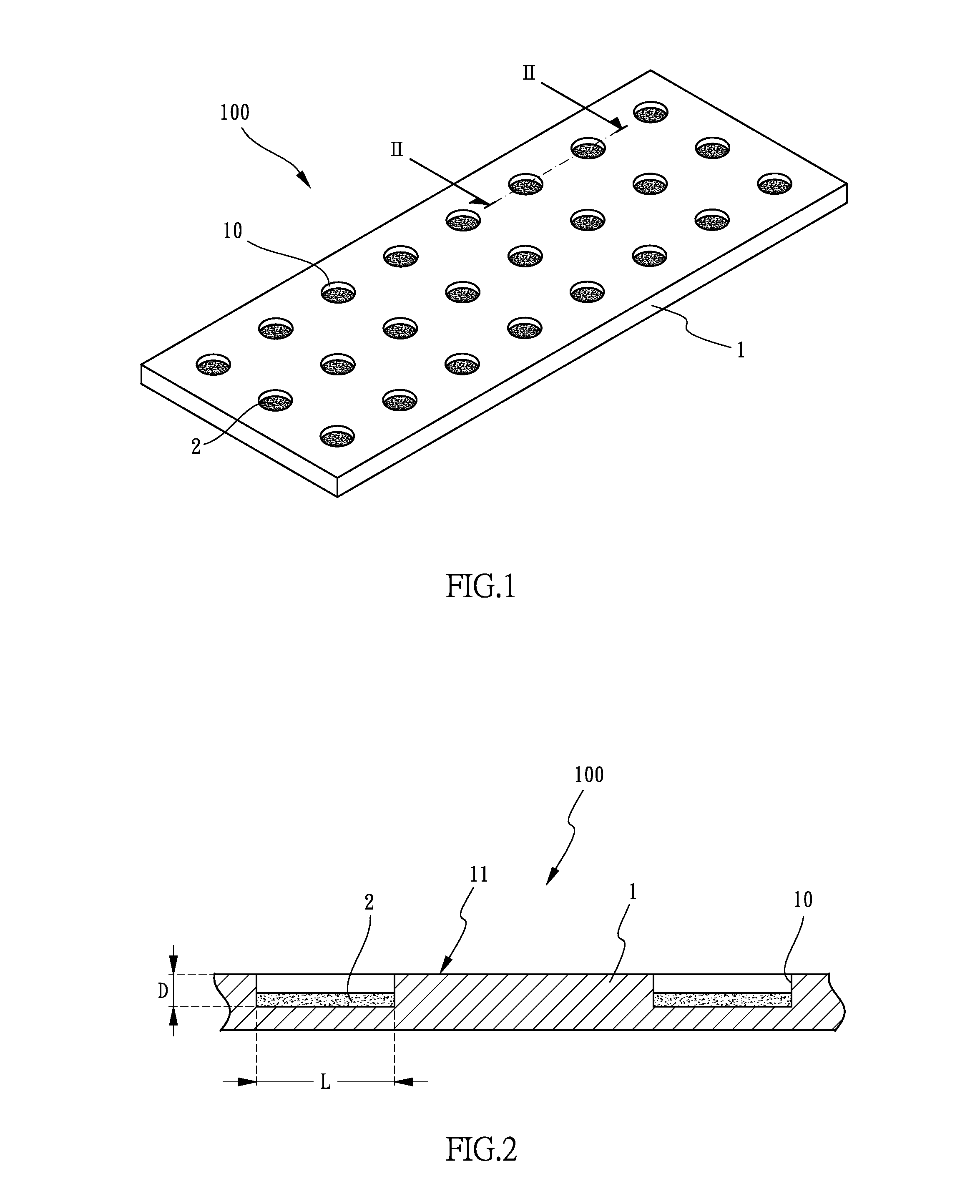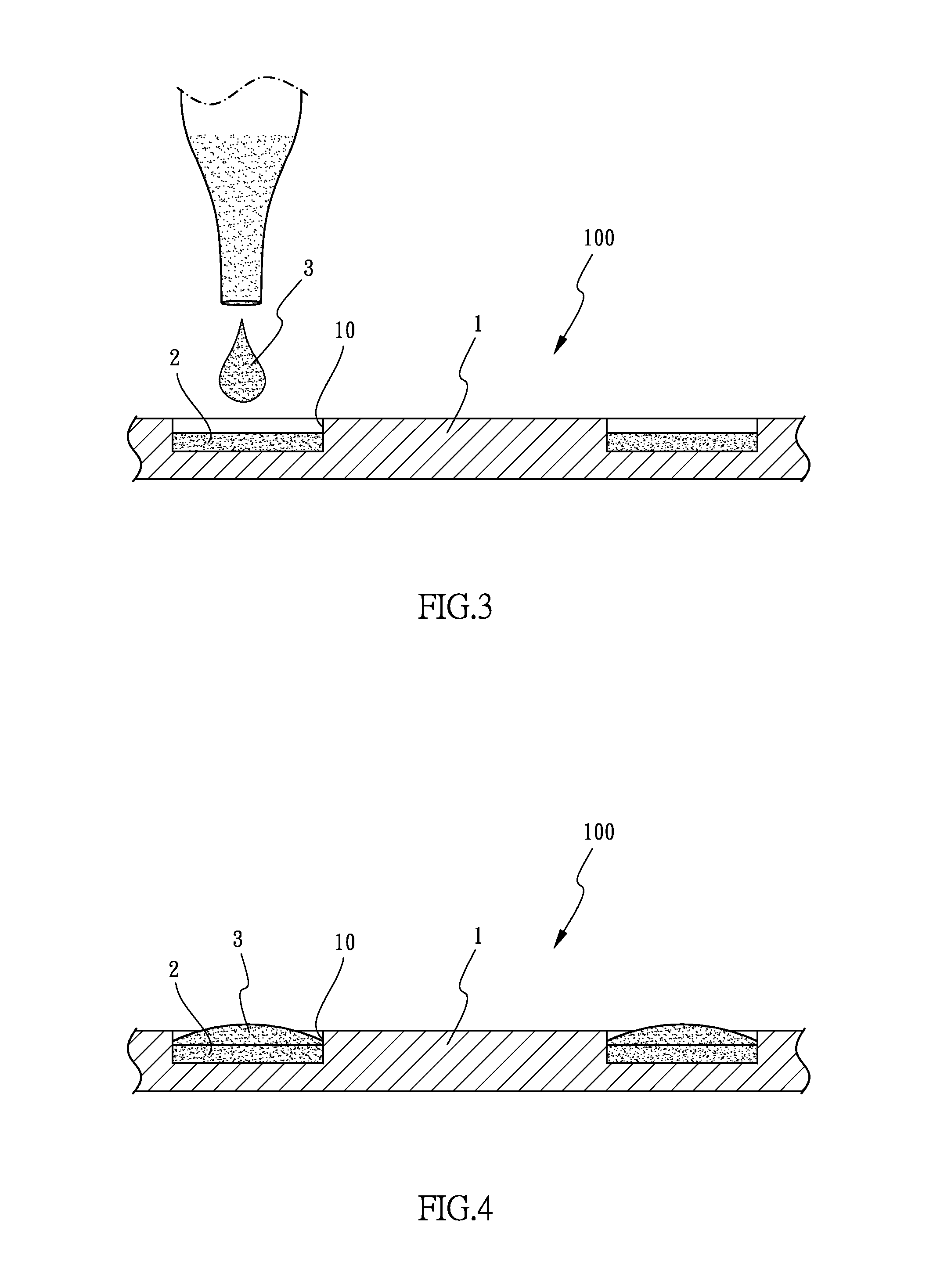Multi-well plate for use in raman spectroscopy
a raman spectroscopy and multi-well plate technology, applied in the field of multi-well plate, can solve the problems of weak molecular raman scattering of photons, hardly being used for raman spectroscopy measurements at a large number of samples in routine applications, and requiring a long drying process
- Summary
- Abstract
- Description
- Claims
- Application Information
AI Technical Summary
Benefits of technology
Problems solved by technology
Method used
Image
Examples
Embodiment Construction
[0020]Referring to FIGS. 1 and 2, there is shown an embodiment of the multi-well plate 100 for use in Raman spectroscopy. The multi-well plate 100 includes a substrate 1 defining a plurality of wells 10 therein, and a metallic layer 2 disposed on a bottom wall of each of the wells 10 in the substrate 1.
[0021]As best seen in FIG. 2, each of the wells 10 is recessed from a top surface 11 of the substrate 1 and into the substrate 1. The substrate 1 may be made of glass or molded from plastic, for cost concerns. Each of the wells 10 in the substrate 1 has a diameter L of about 2 to 5 mm and a depth D of about 1 mm above the metallic layer 2 for reception of about a droplet of an analyte 3, as depicted in FIGS. 3 and 4.
[0022]The metallic layer 2 may be made from commonly used metal, such as aluminum, stainless steel, copper, chromium and iron. The selected metal material may be deposited or electroplated on the bottom wall of each of the wells 10 in the substrate 1 to form the metallic l...
PUM
| Property | Measurement | Unit |
|---|---|---|
| depth | aaaaa | aaaaa |
| diameter | aaaaa | aaaaa |
| depth | aaaaa | aaaaa |
Abstract
Description
Claims
Application Information
 Login to View More
Login to View More - R&D
- Intellectual Property
- Life Sciences
- Materials
- Tech Scout
- Unparalleled Data Quality
- Higher Quality Content
- 60% Fewer Hallucinations
Browse by: Latest US Patents, China's latest patents, Technical Efficacy Thesaurus, Application Domain, Technology Topic, Popular Technical Reports.
© 2025 PatSnap. All rights reserved.Legal|Privacy policy|Modern Slavery Act Transparency Statement|Sitemap|About US| Contact US: help@patsnap.com



